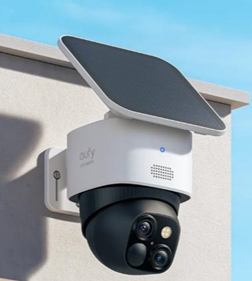reader comments
67
with 40 posters participating, including story author
Share this story
Share on Facebook
Share on Twitter
Share on Reddit
Everyone knows the old Einstein quote about the definition of insanity—it's doing the same thing over and over again and expecting different results. After a pretty
harsh review of the Quadro FX 4800
, I was really hoping not to have to slam another potentially great card hamstrung by bad drivers. As a 3D professional, I've known NVIDIA's drivers to be their weakest point and have lost track of how many times I've recommended Radeon cards over NVIDIA for Maya and Mudbox (I frequently get asked to recommend video cards). It seemed that NVIDIA was just phoning it in and praying that CUDA's entrenchment in professional non-linear video editing, known to be heavily Mac-based, would be enough to sell these to Mac users. So when NVIDIA felt confident enough in their new Quadro 4000 Mac Edition to give me a card for review, I know that they'd either fixed it or gone insane.
Well, I'm pleased to say that the folks at NVIDIA aren't crazy. But that said, this is no perfect score either.
This new card marks NVIDIA's departure from gaming cards for desktop Macs, and, considering that only someone with a twisted sense of humor would buy a Mac Pro for gaming, I think this was a wise choice. Potential users of this card are content creators, and the Quadro's features (not to mention the price) are better oriented towards this latter class of user. While you can get a lot of card for less money in a gaming card like a GTX 4xx or 5xx, such cards aren't practical for extended periods of use. With two GTX 580s running something like Octane Render over a weekend, the heat would be incredible. This heat also makes for a potential liability, shortening the life of your Mac Pro while adding a lot to your monthly electric bill. For shorter periods of intensive GPU usage, a gaming card can be fine.
This review is a little late coming since the card has been out for a few months. I wanted to wait for OpenCL drivers for OS X 10.6 and the Quadro 4000, but after a few months with those still not arriving, I moved on to do the review. Fortunately, the beta releases of OS X 10.7 (Lion) includes OpenCL drivers, so I included scores those scores here. Lion also shed some light on the future of this and other 3D cards on the Mac.
To make things a little more interesting for the review, I've also used a generic PC BIOS Radeon 5570 to see if it's even feasible to use these cards now that Apple seems to be throwing drivers into future OS X version to support these cards. I would never recommend these cards for mission-critical professional applications, but I thought that including the results would be interesting.
Advertisement
Price
The price is by far the best "feature" of this card—at $1200 MSRP, it doesn't cost more than the PC version. Mac users have grown accustomed to paying way too much for the same hardware, and NVIDIA did well by keeping the price down. I really hope this becomes the norm. That said, the Mac version is not exactly what you'd get in the BIOS PC version; it has only two display outputs, where the PC version has three. So I guess it's all not all roses for Mac users, but it's still encouraging given that the card can be bought from Amazon for far below the $1200 suggested retail price:

But, as I said in my review of the Quadro FX 4800, the hardware is only half the picture with these cards. Let's see if the drivers and features make them worth the cost over the cheaper Radeon options.
Test Hardware
Mac Pro dual hexacore Westmere Xeon 2.66 GHz
24GB RAM
120GB OCZ Vertex Turbo SSD system drive
Dual NEC 2490WUXi Spectraview monitors
OS X 10.6.7 and Quadro 4000 Mac driver “Retail_256.01.00f03v7”
Installation and General Usage
Physical installation is standard—the Quadro 4000 comes with adapters for the single DisplayPort connector, and it worked fine with the DVI input on the NEC 2490WUXi. Since there's no HDMI or mini DisplayPort, the card doesn't support HDCP audio out like the Radeon 5870 does. So, considering the lack of a third display output, it's a pretty bare-bones package. You can get an optional 3D output adapter for the 4000, but I didn't test this.
Physically, the card is tiny. I knew it was a one-slot card before it showed up, but it still blew my mind to see the 2GB Fermi card sitting next to the 1GB Radeon 5870:
That there is one petite video card. In the machine, it looks like a silver slice of pumpernickel:
Squint and you'll see the Quadro sitting in the bottom PCI-E slot, using only one power connector, and it's not eating up the extra space intended for large video cards. You could put a single- or dual-slot card in the bottom and the Quadro in the second 16-lane PCI-E slot and still not block any other slots.
Advertisement
The Quadro driver installation went as smoothly as you could expect given Apple's limitations. OS X requires drivers for cards to support drawing to the screen, so you have to install the driver for the card before you pop it into your system. This means that if you have to boot off of a 10.6 system CD, you will be headless unless you use another video card. It's been a problem for every video card that has been released without direct integration into the system, whether for ATI or NVIDIA parts for the past few years. This is pretty embarrassing for Apple, a company that's partly responsible for making "plug-and-play" sound as dated as it does. One time I booted up the machine with the Quadro after reinstalling the OS and the Quadro driver wasn't installed—I had to install it via my iPhone VNC client since the OS was booted but the screen itself was blank. This isn't a criticism of NVIDIA—it's just a note that if you want your Mac Pro to boot a modern operating system that can use this card with no driver loaded, try FreeDOS.
The Quadro is an energy-efficient card that lacks the bandwidth of faster gaming cards, but I couldn't notice much difference in OS X, Photoshop CS5, and other general use apps after using the Radeon 5870. The card is quiet, but not as quiet as the 5870. This is probably due to the single-slot profile, which could force the fan to spin faster to get the same amount of cooling as a slower double-height card's fan. It's not noisy by any means—the 5870 is just exceptionally quiet. Even when running both cards in the one Mac Pro, you can still call it a quiet system. All tests for this review were done using the one card, so you can be sure any bugs mentioned aren't due to this setup. If you're interested in how I did this mix of cards given the Mac Pro only having two power connectors on the motherboard, check out this page of my
Mac Pro 2010 review
.
General support for the Quadro 4000 Mac edition is there, with hardware acceleration working with Quartz Extreme, Flash and Photoshop CS5, but it has a lot of issues that compound to make the experience less enjoyable. Like the GTX 285, the 4000 has a tendency to resync my displays often enough that it's annoying. If the monitors wake or I launch iTunes or QuickTime, there's a 50% chance that it will draw blue screens and go back to normal, like I've just attached another display:









